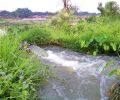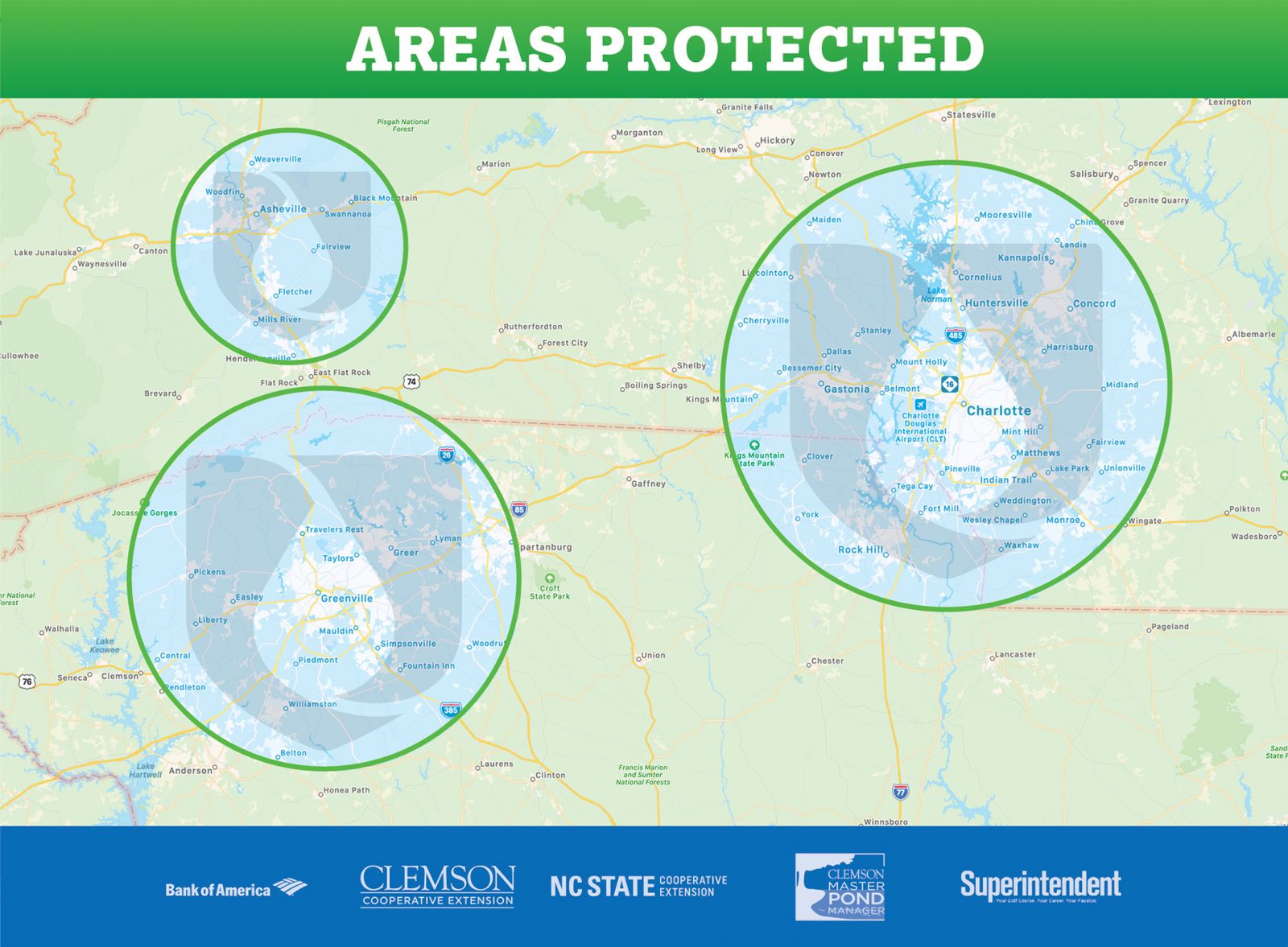When you think about plants and vegetation around a pond in Charlotte NC, what comes to mind? Probably that those plants and flowers are there specifically to make the pond more visually appealing. Whereas that is true, plants and vegetation have more than one purpose.
Two examples are perimeter plantings and floating treatment wetlands. You will also need to control unwanted plants such as aquatic weeds and woody plants.
A perimeter planting is “a ring of native vegetation can be established around the perimeter of a stormwater pond to improve water quality, prevent shoreline erosion (bank slumping), provide wildlife habitat, and deter nuisance Canada geese.
Native vegetation will reduce the need for fertilizers, and also prevent fertilizers, herbicides and pesticides used on surrounding landscaped areas from running off into the pond. Having fewer nutrients in the pond reduces the potential for algal blooms.
A diverse plant community will provide habitat for a variety of wildlife, including beneficial insects, amphibians and birds, all of which keep mosquito populations in check.
Tall, native grasses can discourage Canada geese from inhabiting the pond and adjacent lawns, reducing bacterial pollution that can be harmful to human health. A dense band of plants also can help discourage children from entering open-water areas” (Sea Grant North Carolina).
A floating treatment wetland (FTW) “is an addition that may be made to stormwater ponds to improve their treatment performance, provide wildlife habitat, and add aesthetic qualities. FTWs are typically large plastic mats that float half above and half below water.
Wetland plants, such as rushes, sedges, hibiscus, lizard’s tail and pickerelweed, are planted in the mesh and grow by taking up nutrients from the stormwater pond. The plants grow very quickly – nearly to maturity within the first growing season.
The roots dangle into the water about three feet (depending upon species), providing flow resistance and filtration of pollutants from the water column. Research has shown that these additions help improve a pond’s capacity to remove excessive nutrients, sediment and heavy metals” Sea Grant North Carolina.
There are some plants, however, that are not helpful. In fact, some can even be harmful, costing you more money. One unwanted plant is the aquatic weed. It’s important to monitor aquatic plant growth in North Carolina because they thrive in warm, humid climates.
Another is the woody plant. Woody plants are trees and roots and anything consisting of wood. These plants can puncture dams, threaten structure, and can erode and fall over. It’s important not to plant trees on embankments.
Plants and vegetation are perfect for stormwater ponds. But it’s important to know which are good to plant and which ones are not.
Now serving Greenville SC, Spartanburg SC, Asheville NC, Charlotte NC, Winston-Salem NC, & Greensboro NC areas.
Get started. Become a member today!



